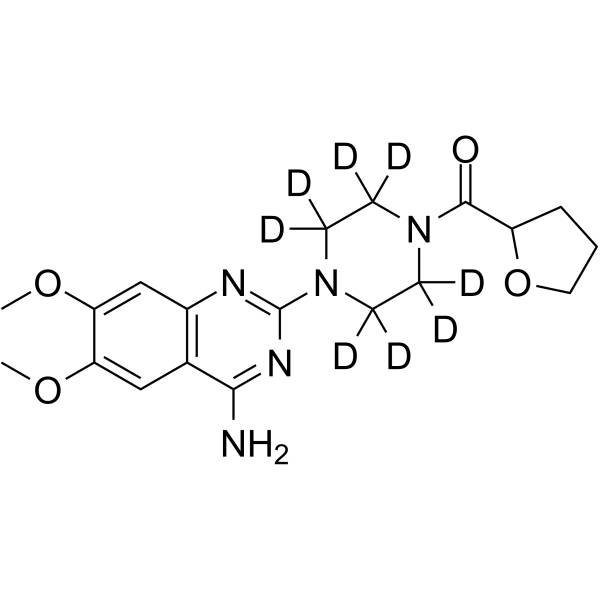Terazosin-d8
Modify Date: 2025-08-27 20:10:10

Terazosin-d8 structure
|
Common Name | Terazosin-d8 | ||
|---|---|---|---|---|
| CAS Number | 1006718-20-2 | Molecular Weight | 395.48 | |
| Density | N/A | Boiling Point | N/A | |
| Molecular Formula | C19H17D8N5O4 | Melting Point | N/A | |
| MSDS | N/A | Flash Point | N/A | |
Use of Terazosin-d8Terazosin-d8 is deuterium labeled Terazosin. Terazosin is a quinazoline derivative and a competitive and orally active α1-adrenoceptor antagonist. Terazosin works by relaxing blood vessels and the opening of the bladder. Terazosin has the potential for benign prostatic hyperplasia (BPH) and high blood pressure treatment[1][2][3]. |
| Name | Terazosin-d8 |
|---|
| Description | Terazosin-d8 is deuterium labeled Terazosin. Terazosin is a quinazoline derivative and a competitive and orally active α1-adrenoceptor antagonist. Terazosin works by relaxing blood vessels and the opening of the bladder. Terazosin has the potential for benign prostatic hyperplasia (BPH) and high blood pressure treatment[1][2][3]. |
|---|---|
| Related Catalog | |
| In Vitro | Stable heavy isotopes of hydrogen, carbon, and other elements have been incorporated into drug molecules, largely as tracers for quantitation during the drug development process. Deuteration has gained attention because of its potential to affect the pharmacokinetic and metabolic profiles of drugs[1]. |
| References |
| Molecular Formula | C19H17D8N5O4 |
|---|---|
| Molecular Weight | 395.48 |
| InChIKey | VCKUSRYTPJJLNI-YEBVBAJPSA-N |
| SMILES | COc1cc2nc(N3CCN(C(=O)C4CCCO4)CC3)nc(N)c2cc1OC |